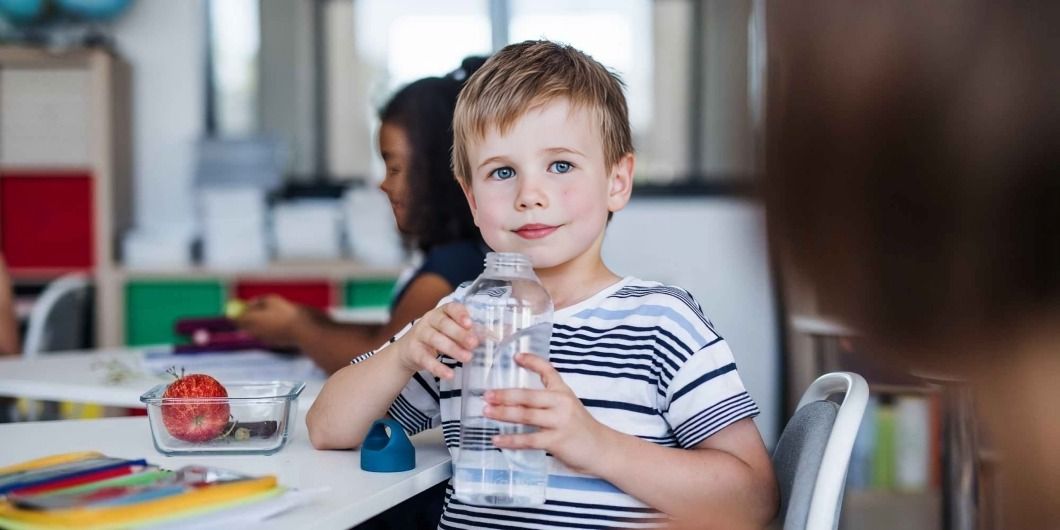
“
Ensuring the safety of children at school is a top priority for parents and educators alike. From navigating busy hallways to participating in playground activities, safety measures play a crucial role in numerous aspects of school life. In this blog, we explore 20 essential school safety tips designed to help parents and educators educate children about staying safe while at school. These tips cover a range of scenarios, from interacting with classmates to handling emergencies, providing a comprehensive guide to fostering a secure learning environment for children.1
1
”
Always pay attention and follow the instructions given by your teachers. They are there to guide and protect you throughout the school day. Listening carefully ensures you understand safety procedures and classroom rules.1
Always stay with your assigned group and teacher during school trips or outings. Wandering off can lead to getting lost or missing important instructions. Staying together ensures everyone's safety and helps the trip run smoothly.2

If you see or experience bullying, tell a teacher or school staff immediately. Bullying can cause emotional and physical harm, and reporting it helps protect everyone. Schools have policies in place to handle such situations effectively.
Avoid pushing, shoving, or rough play that could cause injuries to you or your classmates. Physical contact can easily lead to accidents or misunderstandings. Keeping your hands to yourself helps maintain a safe and respectful environment.3
Always walk in the hallways and classrooms to avoid accidents. Running can lead to slips, trips, and falls, especially in crowded areas. Walking ensures that everyone can move around safely.4
Only use playground and gym equipment as instructed by your teacher or coach. Misusing equipment can result in accidents and injuries. Following instructions helps you enjoy activities safely and responsibly.5
Do not go to off-limits areas like construction zones or staff-only rooms. These areas may contain hazards that could be dangerous. Staying in designated areas ensures you remain safe and supervised.6
Familiarise yourself with the school's emergency evacuation routes and procedures. Knowing what to do in an emergency can help keep you calm and safe. Participate in drills seriously and ask questions if you're unsure.7
Participate seriously in fire drills and understand their importance. Fire drills prepare you for emergencies by teaching you the safest and quickest ways to exit the building. 8
Never engage with strangers or leave school grounds with someone you don't know. Always inform a teacher if someone unfamiliar approaches you. 9
Always open and close doors and windows carefully to prevent accidents. Do not slam doors or hang out of windows, which can cause injuries. Being mindful of how you use doors and windows helps keep you and your classmates safe.10
Do not bring sharp objects, fireworks, or other hazardous items to school. These items can cause serious injuries and are not allowed on school property. Following this rule keeps everyone safe from potential harm.11
Notify a teacher if you see something unsafe, like spills or broken equipment. Reporting hazards helps prevent accidents and injuries. Teachers and staff can quickly address and fix unsafe conditions.12
Maintain good hygiene by washing your hands, especially before eating and after using the restroom. Handwashing prevents the spread of germs and illnesses. Keeping your hands clean helps you stay healthy and protect others.13
Always go to the restroom or other places with a buddy, never alone. Having a buddy ensures you have someone to help if something goes wrong. The buddy system adds an extra layer of safety.14
Do not share personal information, such as your address or phone number, with strangers or online. Protecting your personal information helps keep you safe from potential dangers. 15
Follow all school rules, even if they seem unnecessary. Rules are in place to keep everyone safe and ensure a productive learning environment. Respecting rules shows responsibility and consideration for others.16
Smartwatches and other wearables can track a child's location, heart rate, and activity levels. Some devices even have emergency buttons that can alert parents or emergency services.17
Dress according to the school dress code and weather conditions. Wearing suitable clothing keeps you comfortable and safe throughout the day. Proper attire also ensures you're prepared for any school activities.18

Drink water regularly to stay hydrated and avoid dehydration. Staying hydrated helps you stay focused and healthy. Carry a water bottle and take breaks to drink water, especially during physical activities.


